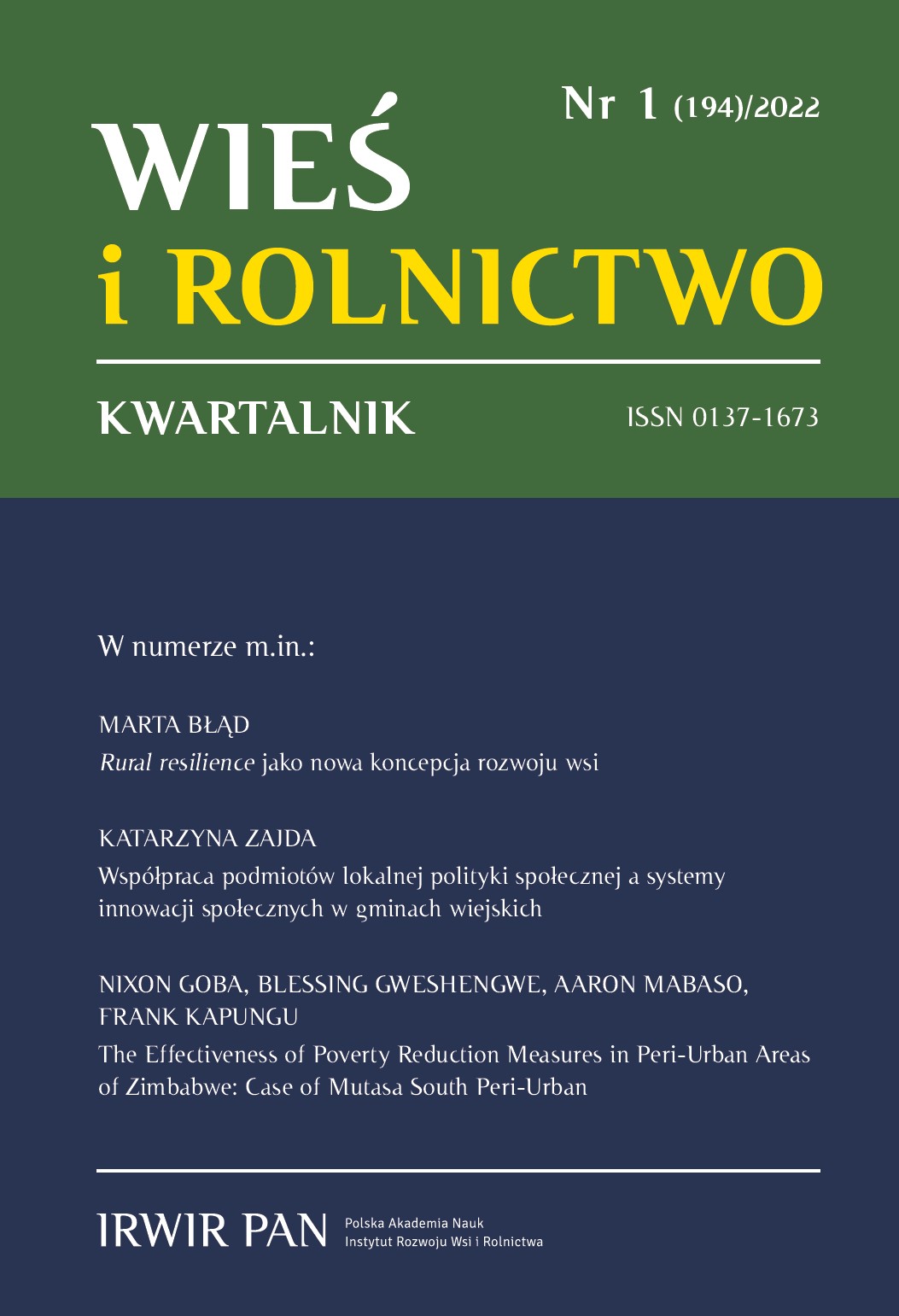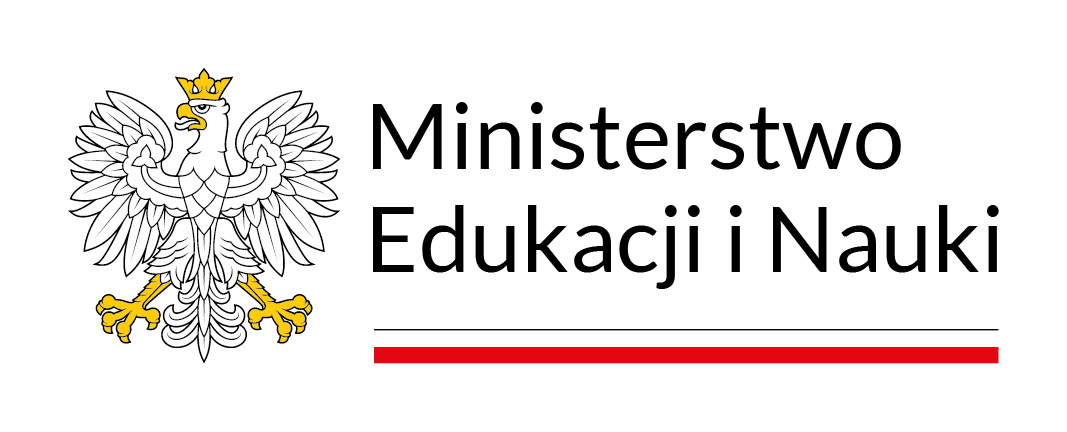The Effectiveness of Poverty Reduction Measures in Peri-Urban Areas of Zimbabwe: Case of Mutasa South Peri-Urban
DOI:
https://doi.org/10.53098/wir012022/03Keywords:
poverty, peri-urban, quality of life, poverty reduction, Sustainable Development Goals, ZimbabweAbstract
The question of “how effective poverty eradication measures being implemented in Zimbabwe are” has not been addressed in the context of peri-urban areas. This question must be addressed since the country has a high incidence of poverty and is working towards achieving Sustainable Development Goal 1 i.e. “No Poverty”. Using a case study of Mutasa South peri-urban, this research therefore sought to answer the question. It adopted an exploratory methodology and data was collected from residents in Mutasa South peri-urban area and key informants from NGOs and Mutasa Rural District Council. The study found that poor people in the study area experience different forms of poverty. Poverty reduction measures being implemented in Mutasa South peri-urban include food aid, education assistance, cash transfer, microfinance and farming programmes. The effectiveness of these measures was examined based on the extent to which the programmes cover the multiple dimensions of poverty found in the study area. As the study found, the programmes take into account all the dimensions of poverty but there are aspects of these dimensions that they pay less attention to and tend to exclude some of the poor.
References
Abdul Razak R., Donkoh S., Ansah I. (2015). Towards women’s empowerment in peri-urban Tamale: The role of sustainable microfinance. UDS International Journal of Development, 2 (1), 160–173.
Abdulai I., Derbile E., Fuseini M. (2021). Livelihood diversification among indigenous peri-urban women in the Wa Municipality, Ghana. Ghana Journal of Development Studies, 18, 72–96. DOI: https://doi.org/10.4314/gjds.v18i1.4
Adu-Okoree B. (2012). Peri-urban poverty: Can micro-finance be a panacea? International Journal of Sociology and Anthropology, 4 (6), 190–198. DOI: https://doi.org/10.5897/IJSA11.147
Allen A. (2010). Neither rural nor urban: Service delivery options that work for the periurban poor. In: M. Khurian, P. McCarney (eds.). Peri-urban Water and Sanitation Services: Policy, Planning and Method (pp. 27–61). Cham: Springer. DOI: https://doi.org/10.1007/978-90-481-9425-4_2
Allen A., Davila J., Hofmann P. (2006). The peri-urban water poor: Citizens or consumers? Environment and Urbanization, 18 (2), 333–351. DOI: https://doi.org/10.1177/0956247806069608
Allen A., Hofmann P., Mukherjee J., Walnycki A. (2017). Water trajectories through non-networked infrastructure: Insights from peri-urban Dar es Salaam, Cochabamba and Kolkata. Urban Research & Practice, 10 (1), 22–42. DOI: https://doi.org/10.1080/17535069.2016.1197306
Amegah A.K. (2021). Slum decay in Sub-Saharan Africa. Environmental Epidemiology, 5 (3), 1–2. DOI: https://doi.org/10.1097/EE9.0000000000000158
Banerjee M.M. (2016). “We routinely borrow to survive”: Exploring the financial capability of income-poor people in India. Social Work, 61 (4), 349–358. DOI: https://doi.org/10.1093/sw/sww045
Banu N., Fazal S. (2016). Urban fringe: Sustainability of livelihoods and well-being of urban fringe households. In: N. Banu, S. Fazal (eds.). Livelihood and Wellbeing in the Urban Fringe (pp. 153–167). New York: Springer International Publishing. DOI: https://doi.org/10.1007/978-3-319-39660-6_7
Binala L. (2016). Irrigation cooperative as a strategy of peri-urban poverty reduction: Case study of Ward 5 in Epworth, Harare. In: C. Chirisa, E. Mazhindu, E. Bandauko (eds.). DOI: https://doi.org/10.1007/978-3-319-34231-3_5
Peri-Urban Developments and Processes in Africa with Special Reference to Zimbabwe (pp. 55–66). Cham: Springer.
Brand C. (2002). Making the Livelihoods Framework Work (RUP, No. 20). Harare: Department of Rural and Urban Planning, University of Zimbabwe.
Chambers R. (2012). Provocations for Development. Rugby, UK: Practical Action Publishing. DOI: https://doi.org/10.3362/9781780447247.000
Chambers R. (2007). Poverty Research: Methodologies, Mindsets and Multidimensionality (Institutes of Development Studies, No. 293). Brighton: Institute of Development Studies.
Chingono N. (2021). Half of Zimbabweans fell into extreme poverty during Covid. The Guardian, June 21. https://www.theguardian.com/global-development/2021/jun/21/half-of-zimbabweans-fell-into-extreme-poverty-during-covid [access: 9th March 2022].
Chingono N. (2020). Zimbabwe urged to prioritise children as record poverty causes food shortages. The Guardian, January 24. https://www.theguardian.com/global-development/2020/jan/24/zimbabwe-urged-to-prioritise-children-as-record-poverty-causes-food-shortages [access: 2nd February 2022].
Devereux S., Sabates-Wheeler R., Longhurst R. (2012). Seasonality, Rural Livelihoods and Development. London–New York: Earthscan. DOI: https://doi.org/10.4324/9780203139820
Eurostat (2021). Living conditions in Europe: Poverty and social exclusion. European Commission. https://static.poder360.com.br/2021/10/eurostat-pobreza-na-UE-out-2021.pdf [access: 22nd March 2022].
Faldi G., Rosati F.N., Moretto L., Teller J. (2021). A Multi-perspective discourse on the sustainability of water and sanitation service co-production in Global South Cities. In: J. Martinez, C.A. Mikkelsen, R. Phillips (eds.). Handbook of Quality of Life and Sustainability (pp. 53–80). New York: Springer International Publishing. DOI: https://doi.org/10.1007/978-3-030-50540-0_4
Godinot X., Walker R. (2020). Poverty in all its forms: Determining the dimensions of poverty through merging knowledge. In: V. Beck, H. Hahn, R. Lepenies (eds.). Dimensions of Poverty: Measurement, Epistemic Injustices, Activism (pp. 263–279). New York: Springer International Publishing. DOI: https://doi.org/10.1007/978-3-030-31711-9_15
Gordon D. (2010). Poverty. In: P. Townsend (ed.). The Peter Townsend Reader (pp. 129–268). Bristol: Policy Press.
Gratton C., Jones I. (2010). Research Methods for Sports Studies. London: Routledge. DOI: https://doi.org/10.4324/9780203879382
Gweshengwe B. (2021). What is the state of poverty in Zimbabwe? https://blessinggweshengwe.wordpress.com/2021/10/05/what-is-the-state-of-poverty-in-zimbabwe/ [access: 15th March 2022].
Gweshengwe B. (2020). Seasonal poverty in Zimbabwe and Cambodia: A comparative analysis of the developing world. Cambodia Journal of Basic and Applied Research, 2 (1), 57–88. http://www.rupp.edu.kh/CJBAR/files/Vol-2-Issue-1/5-BLESSING-2020. pdf [access: 15th March 2022]. DOI: https://doi.org/10.61945/cjbar.2020.2.1.3
Gweshengwe B., Hassan N.H. (2020). Defining the characteristics of poverty and their implications for poverty analysis. Cogent Social Sciences Journal, 6 (1), 1–10. DOI: https://doi.org/10.1080/23311886.2020.1768669
Gweshengwe B., Hassan N.H. (2019). Knowledge to policy: Understanding poverty to create policies that facilitate Zero Poverty in Brunei Darussalam. Southeast Asia: A Multidisciplinary Journal, 19, 95–104.
Gweshengwe B., Matai J. (2022). Peri-urbanisation and the quality of life: Experiences of and lessons from the original inhabitants of Domboshava peri-urban area, Harare. International Journal of Community and Social Development, online. DOI: https://doi.org/10.1177/25166026221112520
Hagen-Zanker J., Bastagli F., Harman L., Barca V., Sturge G., Schmidt T. (2016). Understanding the impact of cash transfers: The evidence. London: Overseas Development Institute. https://www.calpnetwork.org/wp-content/uploads/2020/09/10748.pdf [access: 15th March 2022].
Hungwe E. (2014). Land transactions and rural development policy in the Domboshava peri-urban communal area, Zimbabwe. Dissertation presented for the degree of Doctor of Philosophy in the Faculty of Arts and Social Sciences at Stellenbosch University. https://scholar.sun.ac.za/bitstream/handle/10019.1/96059/hungwe_land_2014.pdf?sequence=3&isAllowed=y [access: 28th August 2022].
Jenkins S.P. (2020). Perspectives on poverty in Europe: Following in Tony Atkinson’s footsteps. Italian Economic Journal, 6 (1), 129–155. DOI: https://doi.org/10.1007/s40797-019-00112-0
Kalinowski S. (2020). Poverty in rural areas: An outline of the problem. Acta Scientiarum Polonorum – Oeconomia, 19 (4), 69–78. DOI: https://doi.org/10.22630/ASPE.2020.19.4.42
Kalinowski S., Wyduba W. (2021). Rural poverty in Poland between the wars. Rural History, 32 (2), 217–232 DOI: https://doi.org/10.1017/S0956793321000091
Kirwan B.E., McMillan M. (2007). Food aid and poverty. American Journal of Agricultural Economics, 89 (5), 1152–1160. DOI: https://doi.org/10.1111/j.1467-8276.2007.01076.x
Maoneni N.S. (2014). Impact of Informal Urban Expansion on Peri-urban Livelihoods: The Case of Seke Communal Lands. Gweru: Midlands State University.
Marshall F., Randhawa P. (2017). Tackling poverty and food security: Lessons from India’s peri-urban frontier. International Institute for Environment and Development. Briefing. https://www.jstor.org/stable/resrep02592 [access: 15th March 2022].
McNabb D.E. (2010). Research Methods for Political Science: Quantitative and Qualitative Approaches. Armonk: M.E. Sharpe.
Méndez-Lemus Y., Vieyra A. (2014). Tracing processes in poverty dynamics: A tale of peri-urban small-scale farmers in Mexico City. Urban Studies, 51 (10), 2009–2035. DOI: https://doi.org/10.1177/0042098013505923
Moretto L., Faldi G., Ranzato M., Rosati F.N., Boozi J.I., Teller J. (2018). Challenges of water and sanitation service co-production in the global South. Environment and Urbanization, 30 (2), 425–443. DOI: https://doi.org/10.1177/0956247818790652
Mutasa F. (2015). The future of the Basic Education Assistance Module, a poverty alleviation strategy in Zimbabwe. Journal of Public Administration and Governance, 5 (3), 155–164. https://citeseerx.ist.psu.edu/viewdoc/download?doi=10.1.1.894.900&rep=rep1&type=pdf [access: 15th March 2022]. DOI: https://doi.org/10.5296/jpag.v5i3.8331
Narayan D., Chambers R., Shah M.K., Petesch P. (2000). Voices of the Poor: Crying Out for Change. New York: Oxford University Press. DOI: https://doi.org/10.1596/0-1952-1602-4
OECD [Organisation for Economic Co-operation and Development] (2007). Addressing the multiple dimensions of poverty. In: Promoting Pro-Poor Growth: Policy Guidance for Donors (pp. 31–36). Paris: OECD Publishing. DOI: https://doi.org/10.1787/9789264024786-4-en
OPHI [Oxford Poverty and Human Development Initiative] (2018). Global Multidimensional Poverty Index 2018: The Most Detailed Picture to Date of the World’s Poorest People. Oxford: Oxford Poverty and Human Development Initiative (OPHI), University of Oxford. https://ophi.org.uk/gmpi-2018/ [access: 22nd March 2022].
Reda M.A., Calfat G. (2020). Food aid impact on poverty reduction: Empirical evidence from rural households in Ethiopia. IOB Discussion Papers. Antwerp: Institute of Development Policy and Management.
Sen A. (1999). Development as Freedom. Oxford: Oxford University Press. Siddique M. (2010). NGOs and poverty issues in peri-urban areas. Economia. Seria Management, 13 (1), 72–88.
UNDP, OPHI (2020). Charting Pathways out of Multidimensional Poverty: Achieving the SDGs. New York: United Nations Development Programme, Oxford Poverty and Human Development Initiative. https://ophi.org.uk/wp-content/uploads/G-MPI_Report_2020_Charting_Pathways.pdf [access: 22nd March 2022].
UNDP, OPHI (2019). Global Multidimensional Poverty Index 2019: Illuminating Inequalities. New York: United Nations Development Programme, Oxford Poverty and Human Development Initiative.
UNICEF (2022). Africa to drastically accelerate progress on water, sanitation and hygiene. https://www.unicef.org/senegal/en/press-releases/africa-drastically-accelerate-progress-water-sanitation-and-hygiene-report [access: 31st March 2022].
UNICEF Zimbabwe (2021). Half of Zimbabweans faced extreme poverty in 2020 due to COVID-19: Rapid Poverty Income Consumption and Expenditure Survey (PICES). https://www.unicef.org/zimbabwe/press-releases/half-zimbabweans-faced-extreme-poverty-2020-due-covid-19-rapid-poverty-income [access: 31st March 2022].
Wegedie T.K. (2018). Determinants of peri-urban households’ livelihood strategy choices: An empirical study of Bahir Dar city, Ethiopia. Cogent Social Sciences, 4 (1), 1562508. DOI: https://doi.org/10.1080/23311886.2018.1562508
World Bank (2022). GDP per capita (current US$) – Zimbabwe. Washington D.C.: World Bank. https://data.worldbank.org/indicator/NY.GDP.PCAP.CD?locations=ZW [access: 31st March 2022].
World Bank (2020). Africa Eastern and Southern Zimbabwe. Poverty & Equity Brief (PEB). World Bank Group. https://databank.worldbank.org/data/download/poverty/987B9C90-CB9F-4D93-AE8C-750588BF00QA/SM2020/Global_POVEQ_ZWE.pdf [access: 31st March 2022].
Yang L. (2017). The relationship between poverty and inequality: Concepts and measurement. In: CASE Papers /205. Centre for Analysis of Social Exclusion, LSE. https://ideas.repec.org/p/cep/sticas/-205.html [access: 31st March 2022].
Zimbabwe National Statistics Agency (2019). Zimbabwe Poverty Report 2017. Harare: Zimbabwe National Statistics Agency. http://www.zimstat.co.zw/wp-content/uploads/publications/Income/Finance/Poverty-Report-2017.pdf [access: 31st March 2022].











